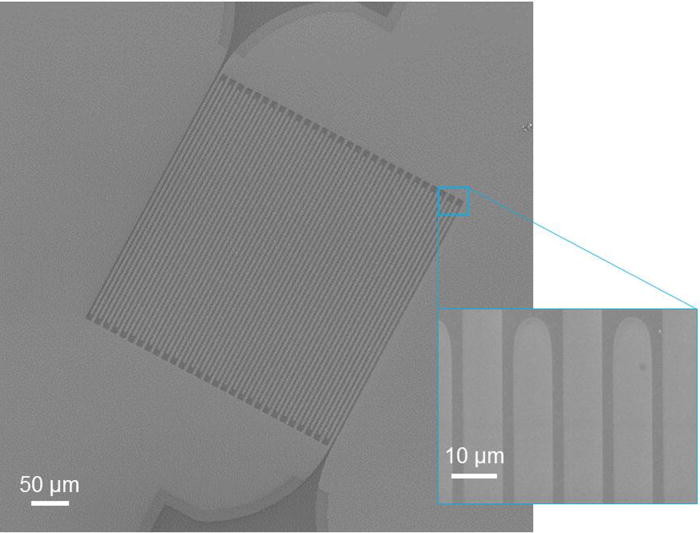News
New Publication “Fabrication of gold nanostructures using wet lift-off without adhesion promotion”
The use of an intervening adhesion layer is essential in reliable fabrication of noble metallic nanostructures for optical and electronic devices. However, many emerging applications such as plasmonics and transfer printing raise the demand of metallic structures without adhesion layers, either to mitigate the plasmon damping or to facilitate the transfer processes. In this work, we systematically investigate the fabrication reliability of adhesion-free lithographic gold nanostructures on Si wafers and gold-coated substrates using a wet lift-off process. According to a large amount of statistical results, we comprehensively evaluate the patterning behavior of metallic nanostructures without adhesion promotion. Analytical modelling and control experiments are carried out to characterize the mechanics of their failure behaviors as a function of morphology and surface property. Our work provides useful information to the nanofabrication community to obtain adhesion-free gold nanostructures for plasmonic and transfer printing applications.
A complete description of the work may be found here.
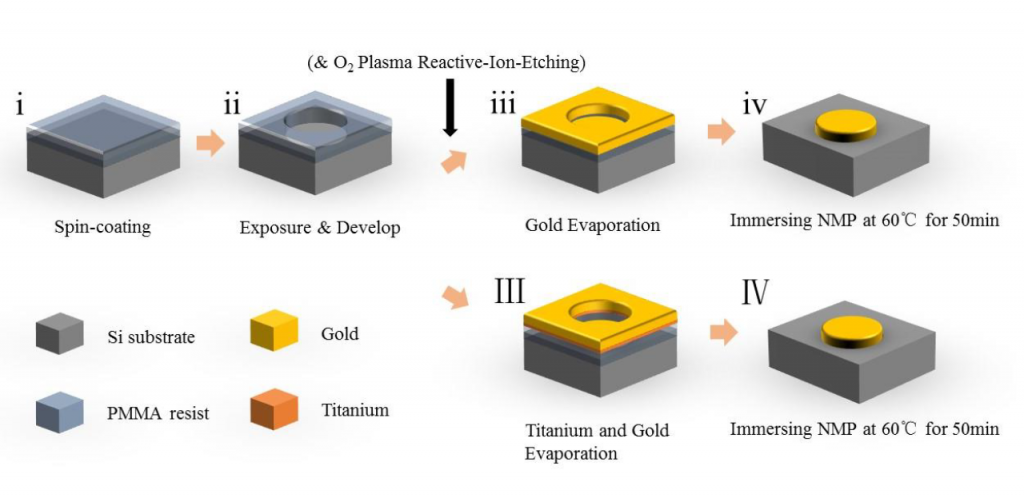
New Publication “Electron energy loss of ultraviolet plasmonic modes in aluminum nanodisks”
We theoretically investigated electron energy loss spectroscopy (EELS) of ultraviolet surface plasmon modes in aluminum nanodisks. Using full-wave Maxell electromagnetic simulations, we studied the impact of the diameter on the resonant modes of the nanodisks. We found that the mode behavior can be separately classified for two distinct cases: (1) flat nanodisks where the diameter is much larger than the thickness and (2) thick nanodisks where the diameter is comparable to the thickness. While the multipolar edge modes and breathing modes of flat nanostructures have previously been interpreted using intuitive, analytical models based on surface plasmon polariton (SPP) modes of a thin-film stack, it has been found that the true dispersion relation of the multipolar edge modes deviates significantly from the SPP dispersion relation. Here, we developed a modified intuitive model that uses effective wavelength theory to accurately model this dispersion relation with significantly less computational overhead compared to full-wave Maxwell electromagnetic simulations. However, for the case of thick nanodisks, this effective wavelength theory breaks down, and such intuitive models are no longer viable. We found that this is because some modes of the thick nanodisks carry a polar (i.e., out of the substrate plane or along the electron beam direction) dependence and cannot be simply categorized as radial breathing modes or angular (azimuthal) multipolar edge modes. This polar dependence leads to radiative losses, motivating the use of simultaneous EELS and cathodoluminescence measurements when experimentally investigating the complex mode behavior of thick nanostructures.
A complete description of the work may be found here.
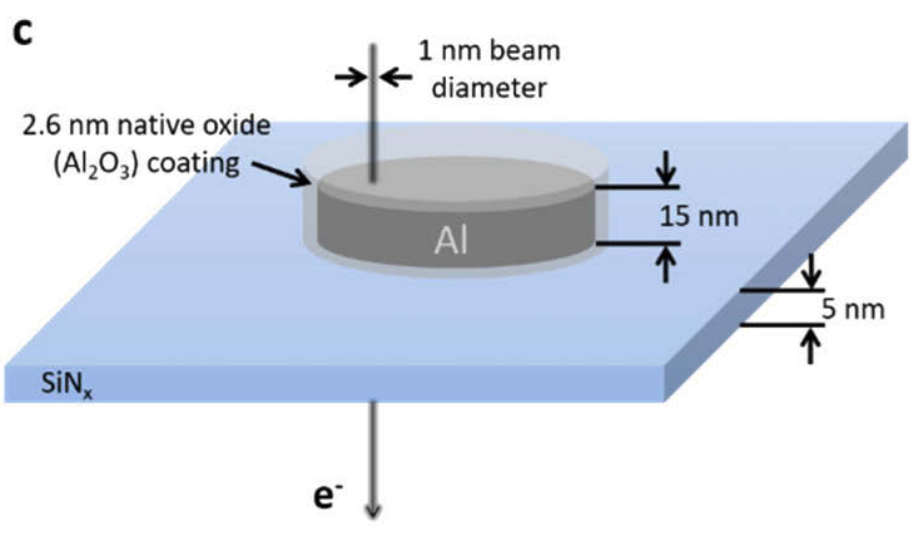
New Publication “Light phase detection with on-chip petahertz electronic networks”
Ultrafast, high-intensity light-matter interactions lead to optical-field-driven photocurrents with an attosecond-level temporal response. These photocurrents can be used to detect the carrier-envelope-phase (CEP) of short optical pulses, and enable optical-frequency, petahertz (PHz) electronics for high-speed information processing. Despite recent reports on optical-field-driven photocurrents in various nanoscale solid-state materials, little has been done in examining the large-scale electronic integration of these devices to improve their functionality and compactness. In this work, we demonstrate enhanced, on-chip CEP detection via optical-field-driven photocurrents in a monolithic array of electrically-connected plasmonic bow-tie nanoantennas that are contained within an area of hundreds of square microns. The technique is scalable and could potentially be used for shot-to-shot CEP tagging applications requiring orders-of-magnitude less pulse energy compared to alternative ionization-based techniques. Our results open avenues for compact time-domain, on-chip CEP detection, and inform the development of integrated circuits for PHz electronics as well as integrated platforms for attosecond and strong-field science.
A complete description of the work may be found here.
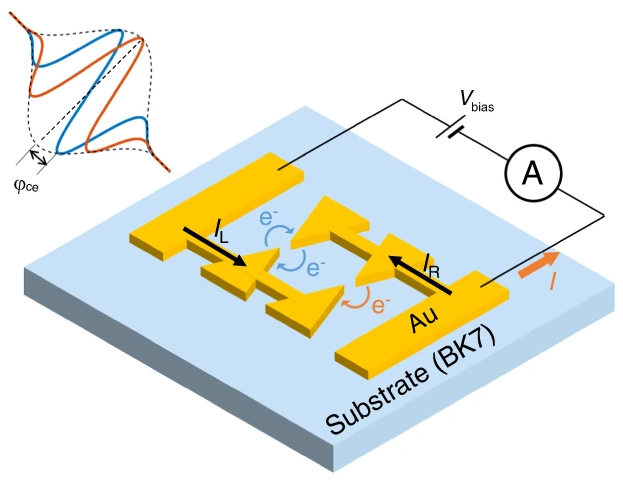
New Publication “Nanostructured-membrane electron phase plates”
Electron beams can acquire designed phase modulations by passing through nanostructured material phase plates. These phase modulations enable electron wavefront shaping and benefit electron microscopy, spectroscopy, lithography, and interferometry. However, in the fabrication of electron phase plates, the typically used focused-ion-beam-milling method limits the fabrication throughput and hence the active area of the phase plates. Here, we fabricated large-area electron phase plates with electron-beam lithography and reactive-ion-etching. The phase plates are characterized by electron diffraction in transmission electron microscopes with various electron energies, as well as diffractive imaging in a scanning electron microscope. We found the phase plates could produce a null in the center of the bright-field based on coherent interference of diffractive beams. Our work adds capabilities to the fabrication of electron phase plates. The nullification of the direct beam and the tunable diffraction efficiency demonstrated here also paves the way towards novel dark-field electron-microscopy techniques.
A complete description of the work may be found here.
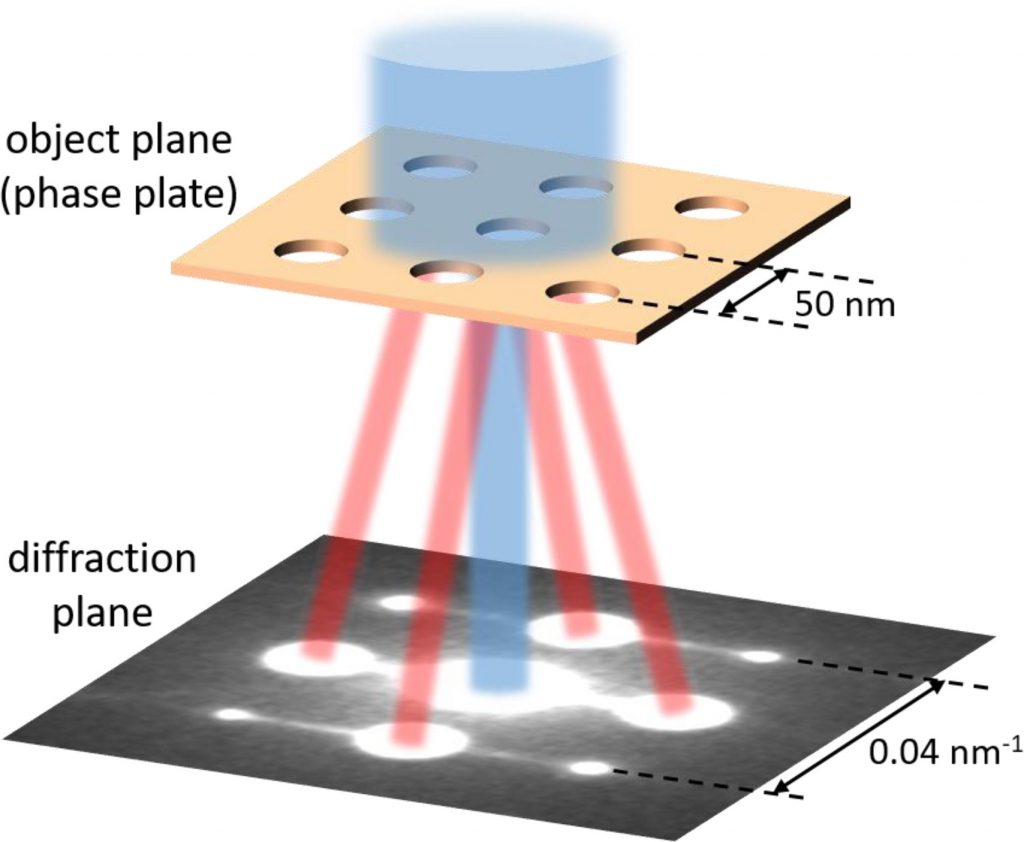
New Publication “Large-area microwire MoSi single-photon detectors at 1550 nm wavelength”
We demonstrate saturated internal detection efficiency at 1550 nm wavelengths for meander-shaped superconducting nanowire single-photon detectors made of 3 nm thick MoSi films with widths of 1 and 3 μm and active areas up to 400 × 400 μm2. Despite hairpin turns and a large number of squares (up to 104) in the device, the dark count rate was measured to be ∼103 cps at 99% of the switching current. This value is about two orders of magnitude lower than the results reported recently for short MoSi devices with shunt resistors. We also found that 5 nm thick MoSi detectors with the same geometry were insensitive to single near-infrared photons, which may be associated with different levels of suppression of the superconducting order parameter. However, our results obtained on 3 nm thick MoSi devices are in good agreement with predictions in the frame of a kinetic-equation approach
A complete description of the work may be found here.
